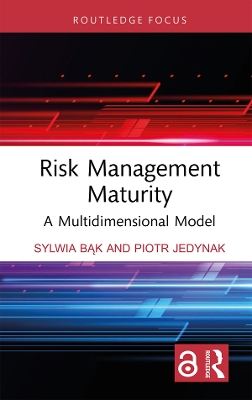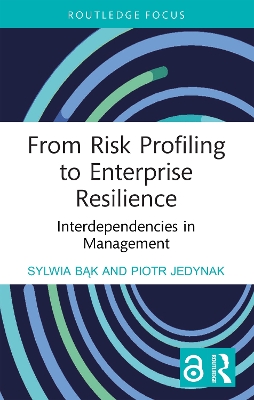Routledge Focus on Business and Management
2 total works
Crises like the COVID-19 pandemic are wake-up calls for enterprises to review their current risk management models. This book suggests a more robust risk management maturity model and illustrates the application in crisis situations.
The book surveys existing risk management maturity models and proposes a new model appropriate for assessing the risk management processes in enterprises during times of crisis. Its key advantages include the correlation of its attributes with crisis situations and an innovative methodological approach to model development. The authors use the model to examine 107 enterprises from the financial services, construction and IT sector, showing how it allows the user to identify risk management maturity changes in the aftermath of the COVID-19 pandemic.
The book will interest entrepreneurs, managers and risk management professionals, who can use the model in their management processes, as well as enterprise stakeholders and academics.
The Open Access version of this book, available at www.taylorfrancis.com, has been made available under a Creative Commons Attribution- Non Commercial-No Derivatives 4.0 license.
From Risk Profiling to Enterprise Resilience
by Sylwia Bąk and Piotr Jedynak
From Risk Profiling to Enterprise Resilience introduces readers to a new approach to risk profiling theory and methodology, as well as relationships between an enterprise’s risk profile and its resilience to crises.
Given the need to reflect on changes in approaches to risk and risk management in the aftermath of the COVID-19 pandemic, the book attempts to characterize the interdependencies between risk profiling processes and the processes of shaping and improving enterprise resilience. After reading the book, the readers will firstly gain theoretical knowledge of risk management in non-crisis and crisis conditions, risk mitigation and risk profiling. Secondly, they will also acquire the practical skills of performing risk profiling, identifying risk mitigation actions, perceiving relationships between individual enterprises’ risk profiles (and their changes), and the building and improving of their resilience. The inclusion of graphics, tables, diagrams, charts, instructions and recommendations will make the content is also easy to understand for a non-specialist audience.
This book will be of great interest entrepreneurs, managers and risk management professionals, who can use the content included in the book in their management processes, as well as stakeholders of various enterprises, business and academic communities and students of all levels.

